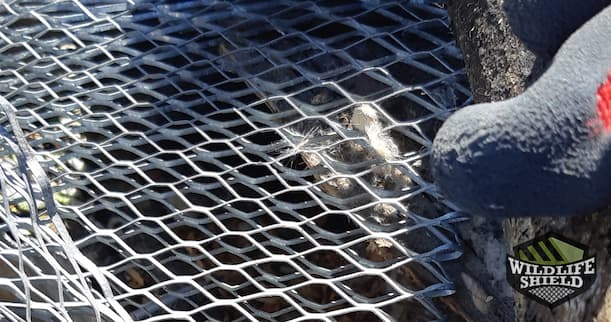This article will analyze and recount a squirrel removal job in Brampton in which a squirrel had entered the attic through an opening at the side of the house from the drip edge. It will detail the steps taken in exclusion, by the technician, to humanely remove the squirrel from the attic. This is located in Madoc, Brampton between Rutherford Road North and Highway 410.
The technicians, before the exclusion, must first inspect and confer with the customer or customer’s on the issue and then must inspect for levels of activity. The customer’s original complaint was that a squirrel had penetrated her attic about one month before and may have made multiple entrances. A technician was sent out to inspect for entryways and to exclude the animal with a one-way door.
Madoc, Brampton: A small suburb surrounded by nature
Brampton was once the home of the Huron-Wendat tribe who farmed the area long before Europeans arrived. The French arrived in the 1600s and made an alliance with the Wendat to fight against the Haudenosaunee. This war of the Iroquois rapidly depopulated the Huron-Wendat through war and with European diseases. After this, the Haudenosaunee left Brampton for the Northern New York State where they have remained for hundreds of years. This allowed for the migration of the Anishinaabeg and the Mississauga to the Brampton area. In 1818, James Ajetance, chief of the Mississaugas, signed an agreement with the British colonial government to give up 2,622square kilometres to the British government in exchange for a yearly stipend of 522 lb and 10 shillings delivered from England every year. The Mississaugas relocated to the six nations of the grand river and have remained since. In the 1800s the town grew and was settled. It was incorporated as a village in 1853 and named after a village in Cumberland, England. Economic development was spurred with the arrival of the grand trunk railway which caused the Peel County government to establish itself in Brampton which led to the rapid growth of both the economy and the population.
Exterior Inspection
The exterior inspection found a large hole along the drip edge of the roof. The hole revealed prior steel mesh that was shoved into the hole as a protective measure which was ineffective. The opening showed signs of squirrel entry due to the discovery of fur bits on the mesh. Fourteen feet of drip edge would require exclusion to resolve the issue along with the installation of a one-way door for the squirrel to be evicted. Upon lifting the damaged shingles it was discovered that fur was present on the mesh and that insulation had been pulled out from inside the attic.
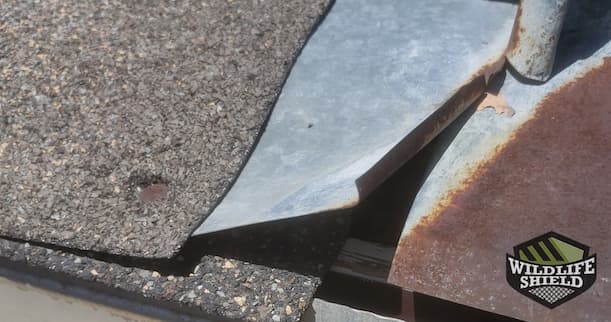
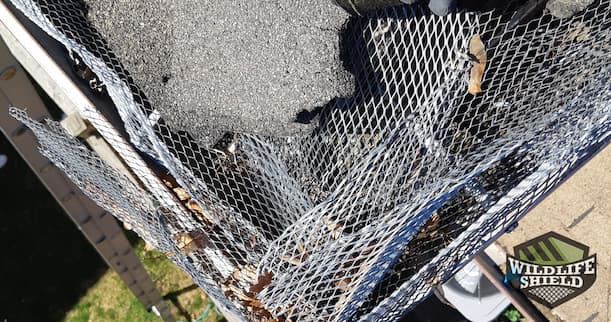
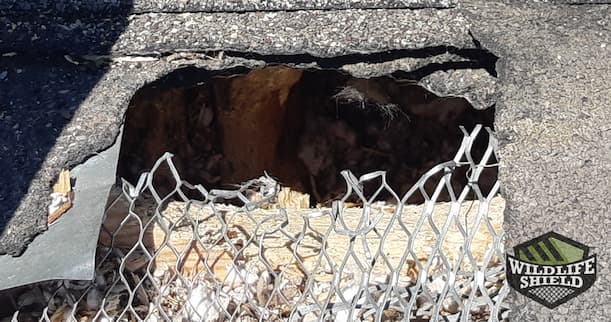
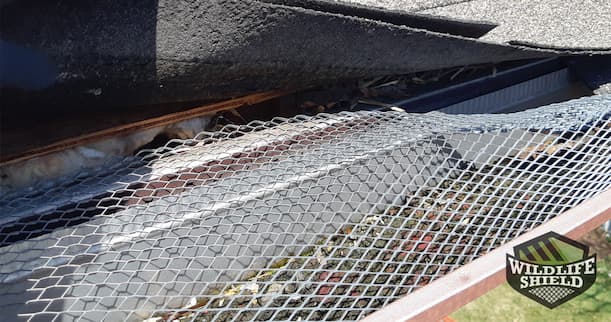
Initial Measures
The technician located the entranceway the animal used to enter the attic and inspected it for activity. Fur was found and at the opening showing recent activity. The squirrel would need to be evicted via a one-way door which allows the animal to leave on its own, humanely but prevents it from getting back in.
Proposed exclusion
The technician used a one-way door attached to the drip edge where the animal penetrated which will humanely allow the squirrel to vacate the attic while locking it out and blocking its access to get back into the attic. The drip edge was excluded and reinforced in a number of areas.
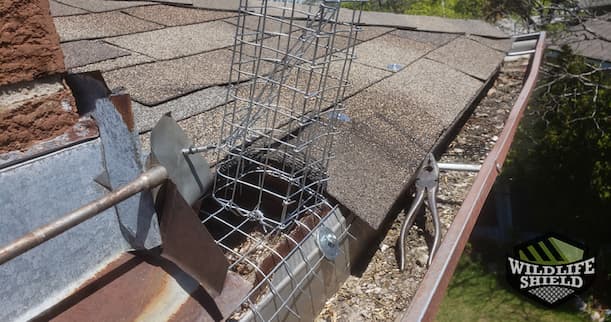

Conclusion
The technician successfully evicted the squirrel using the one-way door and excluded the drip edge to protect it from future wild animal ingress. The one-way door was effective in evicting the squirrel safely and humanely, a second door was erected to ensure the squirrel vacates the attic.
